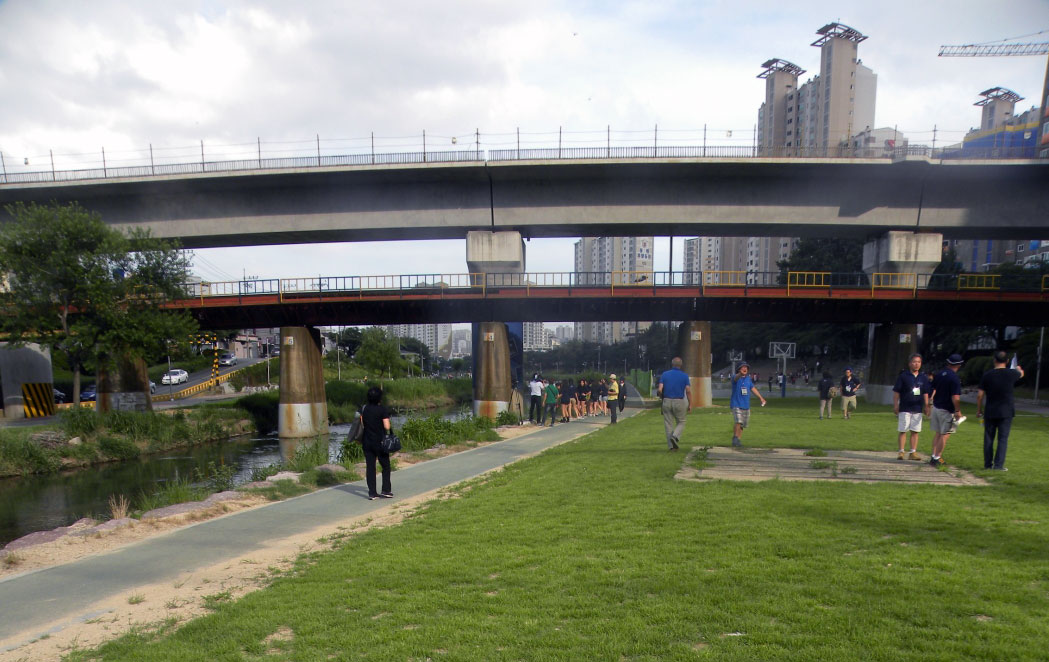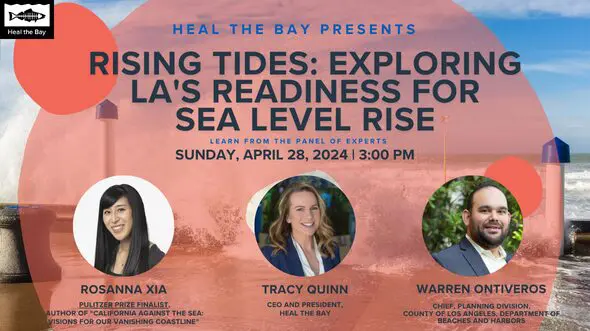Heal the Bay's Man in Korea
Exhilarating! That’s how I describe my recent expedition with the Pacific American Volunteer Association (PAVA) to Korea. Our mission was to explore some of the many water spaces the Koreans have transformed over the past two decades. Beyond the adventure of seeing a new land and exploring a culture quite different from my own (this being my first trip to Asia), I had the opportunity to glimpse what potentially awaits so many of our own local water spaces.
For those of you unfamiliar with this story, I mentioned a few weeks back that one of our community partners was taking me, Heal the Bay’s Watershed Education Manager, on a journey with them to Korea to hear and see how different cultures deal with water in the environment. For the past three years, the students of PAVA Jr have joined me on an educational exploration of water in the environments throughout Los Angeles, and this year was about taking those lessons one step further.
Some of the highlights of my trip:
- Mallipo Beach in Taean County, where a 2007 oil spill devastated a beach tourist community, leaving local marine ecosystems coated in 290,000 tons of thick sludge and local residents in a thick economic and very personal depression. But, in the face of such an overwhelming catastrophe, community members from throughout the region joined forces to volunteer in one of the world’s largest single efforts, bringing together just over 1 million people to help clean the beaches and remove oil. Now, Taean Love (a local organization) continues to keep Mallipo beautiful, and after five short years of recovery, the city has seen tourism return to normal. As we prepare locally for Coastal Cleanup Day, I can feel swell with excitement at what can happen when people join together to volunteer.
 Oncheoncheon River near Busan, Korea’s second largest city. Here, in a dense urban center, what once was a creek
Oncheoncheon River near Busan, Korea’s second largest city. Here, in a dense urban center, what once was a creek
polluted beyond recognition from local development and nearby industrialization, is now part of a green belt through the city, providing much needed recreation and habitat space for both people and animals to enjoy. A bicycle path, park space, and outdoor sports fields fill the outer reaches of the floodplain, while riverside reeds, shrubs, and native birds fill the shores and banks. Again, standing in this space so far from home, I couldn’t help but think of the Glendale Narrows section of our own Los Angeles River, where for the first time in 80 years, people have been allowed to recreate this summer, I can only be excited by the possibilities!- Suncheon Bay, an extremely well preserved coastal wetland complete with quick little red crabs that dart in and out of holes when you’re trying to take pictures of them (I myself have no pictures for this site as my camera died right when was I was trying to capture the moment). At just over 6,000 acres, Suncheon Bay boasts the widest reed bed of all of Korea, and is also home to several rare and endangered bird species, including the Hooded Crane and the Chinese Egret. This space was my favorite of the whole trip, if only because standing in such a wide and open wetland with reeds dancing in the wind all around you feels like you’re floating in a sea of green. Here too, I can only think of our own Ballona Wetlands could become, once restoration begins.
- The Cheonggyecheon in Seoul, the heart of South Korea’s capital for 600 years. This river provides local freshwater for drinking and cleaning, and well as food from fishing and trapping. After the Korean War, when hyper industrialization began to drive population inwards from rural settlements to the urban center, the Cheonggyecheon became home to shanty towns built unsteadily over the creek space. Later, when the city’s need became transportation, a freeway was built over the space to provide a thoroughfare from east to west for the bustling city. Much like our own Los Angeles River, the Cheonggyecheon became the victim of urbanization and growth, hidden beneath concrete and impaired beneath a city that no longer saw it. Then, in the mid-90s, Korea began to change its environmental tune, investing time, money, and political and social capital in revitalization their urban waterways. The Cheonggyecheon was daylighted from beneath its concrete enclosure, and once again brought into the city’s daily life. While it is not the greenway that the Oncheoncheon in Busan is, nor the sprawling eco-preserve that Suncheon Bay, the Cheonggyecheon offers the hustling and bustling city a return to calmer times. Walking along its banks, I felt a sigh of relief from the skyscrapers and traffic that detail so much of life in Seoul, and the exhaustion from my trip gave way to soaking my feet in the water’s cool flow while watching several ducks bathe themselves. I can only hope that when the Los Angeles River is made anew, it will offer up this same urban getaway.

And thus my travels ended in Seoul. I will say my experience in Korean waters is but a glimpse of the potential that we strive for here in our own city. It’s true that the students and I saw many visions of the future and of potentially cleaner waters on this trip, but most of all we received a renewed sense of drive to protect what we love in our own home town.
— Eddie Murphy,
Heal the Bay’s Watershed Education Manager
Discover the wide range of Heal the Bay’s public education resources.



